Why Abstract Art is Perfect For Your Yoga Or Meditation Space
When we talk about presence, we often leave out the physical space it happens in. But you feel it. Before the breath deepens. Before the mind slows. The room already speaks.
And what it says matters.
Whether you’re moving through sun salutations, sinking into stillness, or simply trying to carve out a moment of quiet in a too-loud world, your environment holds power. It either amplifies your inner state or interrupts it.
Most people focus on incense. Or lighting. Or sound.
But what you see, and how it makes you feel, is just as important.
That’s where abstract art becomes essential. It isn’t pretty filler. It’s not just an aesthetic touch. It’s a portal. A presence. A steady visual companion that helps you arrive more fully in your body, your breath, your truth.
This is not about taste. This is about energy.
And this is why abstract art belongs in every meditation and yoga space, private, shared, or professional.
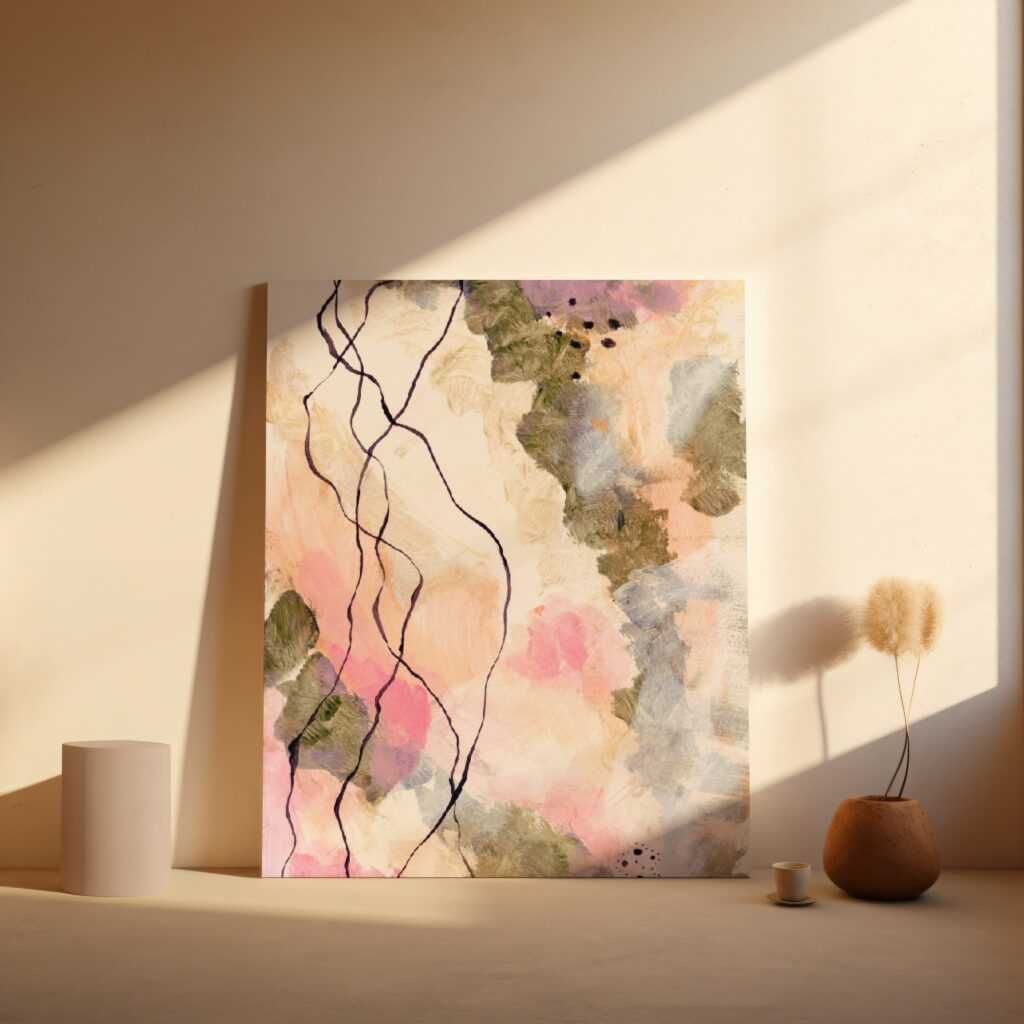
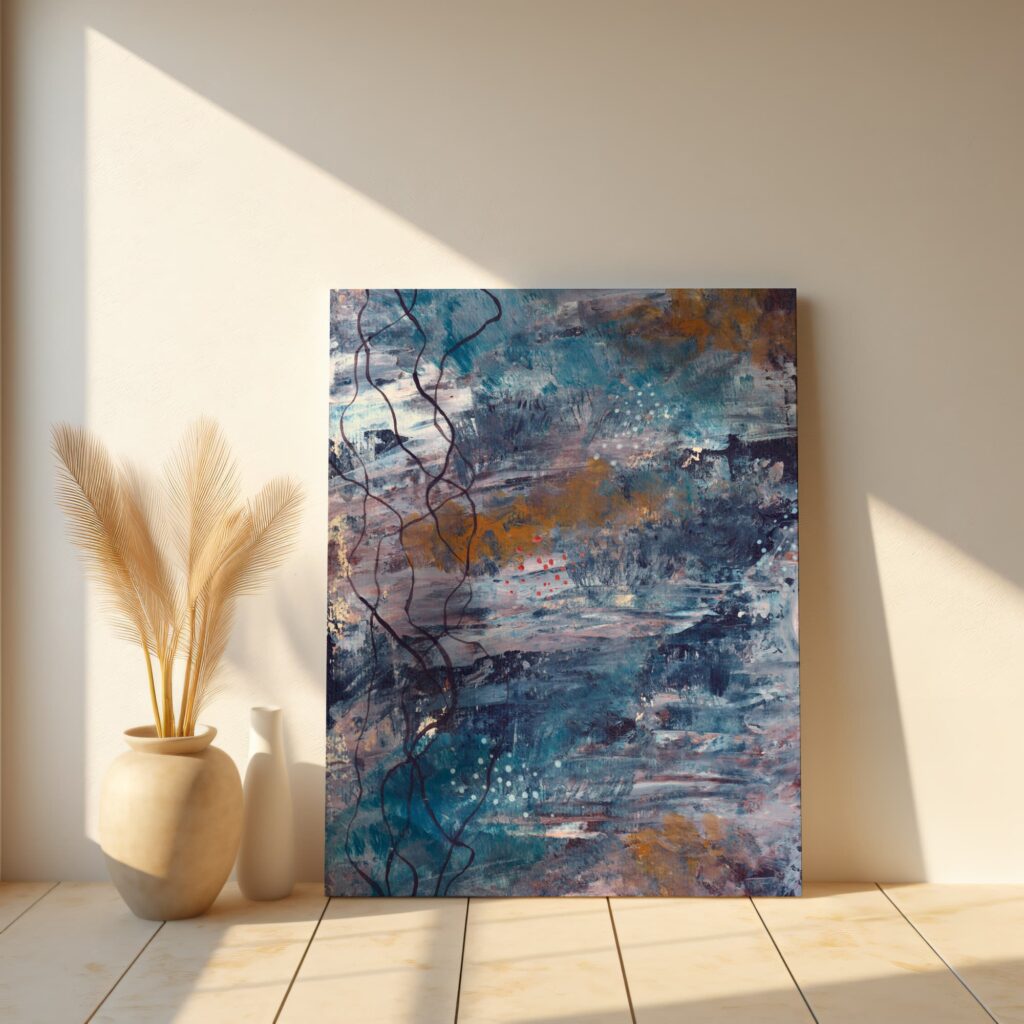
It Holds The Room Without Overwhelming It
Some art is loud. It wants to be seen, analysed, admired. But in spaces where the point is to go inward, that’s not helpful.
Abstract art, especially when chosen with emotional intelligence, doesn’t overpower the space. It settles into it. It supports stillness without draining focus. It becomes part of the architecture of presence.
That’s the sweet spot. Your eye can rest on it, your body can respond to it, but your attention isn’t hijacked.
You remain with yourself, and the art stays quietly with you.
It Creates A Visual Entry Point Into Altered States
If you’ve ever done a long breath practice or a deep savasana, you know the feeling — when your mind releases, and time stops. Abstract art can help you get there faster.
Because it’s non-representational, your brain stops trying to “read” it and starts engaging with it differently, through sensation instead of logic.
This shift in brainwave activity mirrors the entry into meditative states. You’re gently nudged out of beta (thinking) and into alpha (flow). And from there, your practice deepens.
In this way, art becomes part of the practice itself, not something on the wall, but a quiet collaborator in your altered state.
It Speaks To The Subconscious Directly
A lot of inner work happens beneath the surface. You might not be able to name what’s shifting. You just know that something is moving.
Abstract art excels at engaging the subconscious. The brain doesn’t resist it. It doesn’t need a narrative or explanation. Instead, it allows symbols, emotion, and colour to reach the parts of you that language often misses.
That’s especially valuable in meditation spaces where the goal is not mental analysis, but energetic attunement.
A well-placed piece can bring things to the surface, softly. You might not know why it moves you. But your body knows. Your intuition knows. And that’s enough.
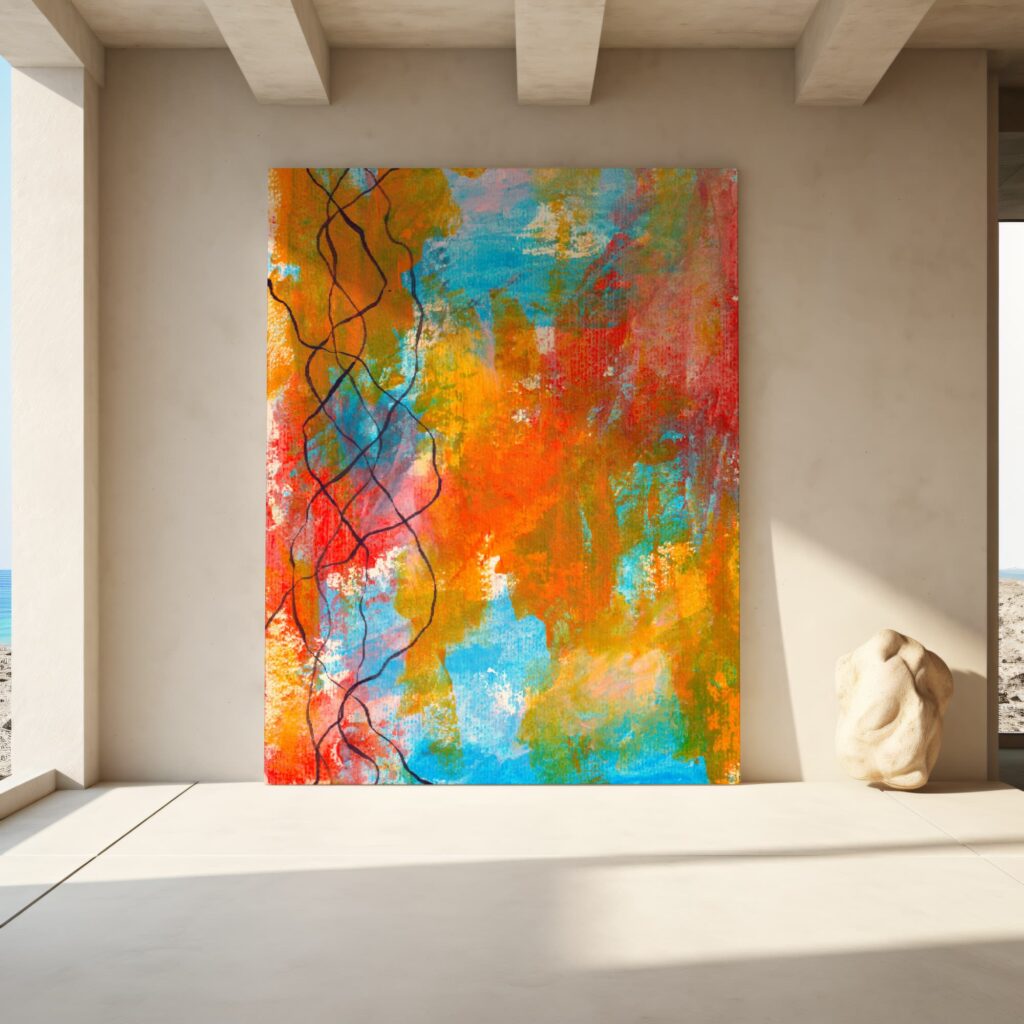
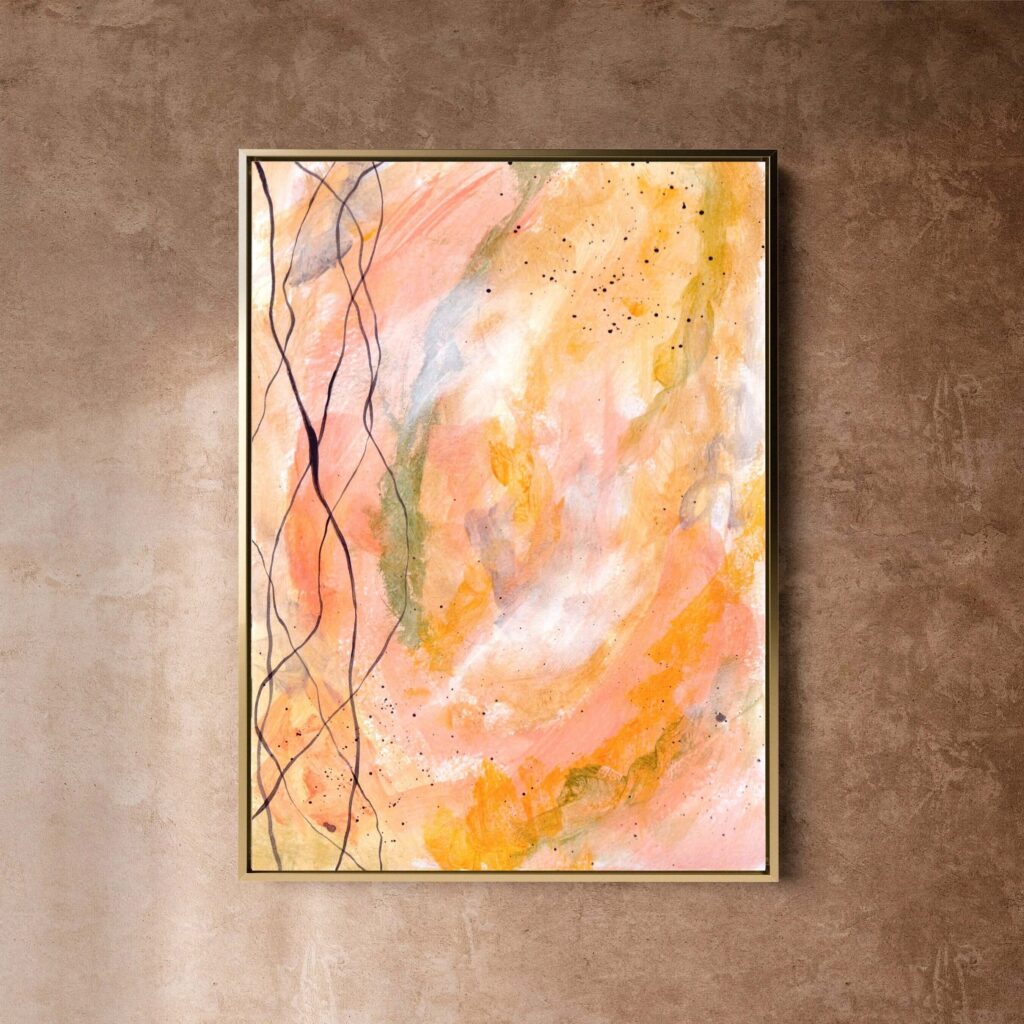
It Lets The Space Evolve With You
Unlike literal artwork, abstract pieces don’t lock the room into a single story. As you grow, they grow with you. They don’t become stale. They reveal something new every time you practise.
One day, you’ll see calm. The next, you’ll notice chaos. Another day, you’ll see something in the negative space that you swear wasn’t there before.
This flexibility mirrors the reality of your inner life. No two practices are the same. No two days are the same. Your space needs to reflect that, and abstract art does it effortlessly.
It doesn’t dictate. It listens.
It Gives Your Nervous System A Soft Place To Land
So many people carry constant activation. Even when they slow down physically, their systems remain on alert. Abstract art helps interrupt that.
Through shape, tone, and rhythm, it signals to your body that it is safe to soften.
This is especially useful for people with a trauma history, sensory sensitivity, or a tendency to dissociate during stillness.
A visually grounding, emotionally rich canvas can act as a gentle anchor, not forcing attention, but offering it a place to land.
It says, “You’re safe here. You don’t need to do anything. Just be.”
It Acts As A Mirror For Your Inner Process
Every emotional state lives somewhere in the body, and abstract art can become the bridge that helps you meet it. Not with words, but with image. With tone. With intuitive response.
Sometimes your practice brings joy. Sometimes it brings grief. Sometimes it brings both in the same breath.
The right artwork won’t try to correct or soothe you out of it. It will sit with you in it. It will let you project, reflect, release, without judgement, without agenda.
That’s rare. That’s powerful.
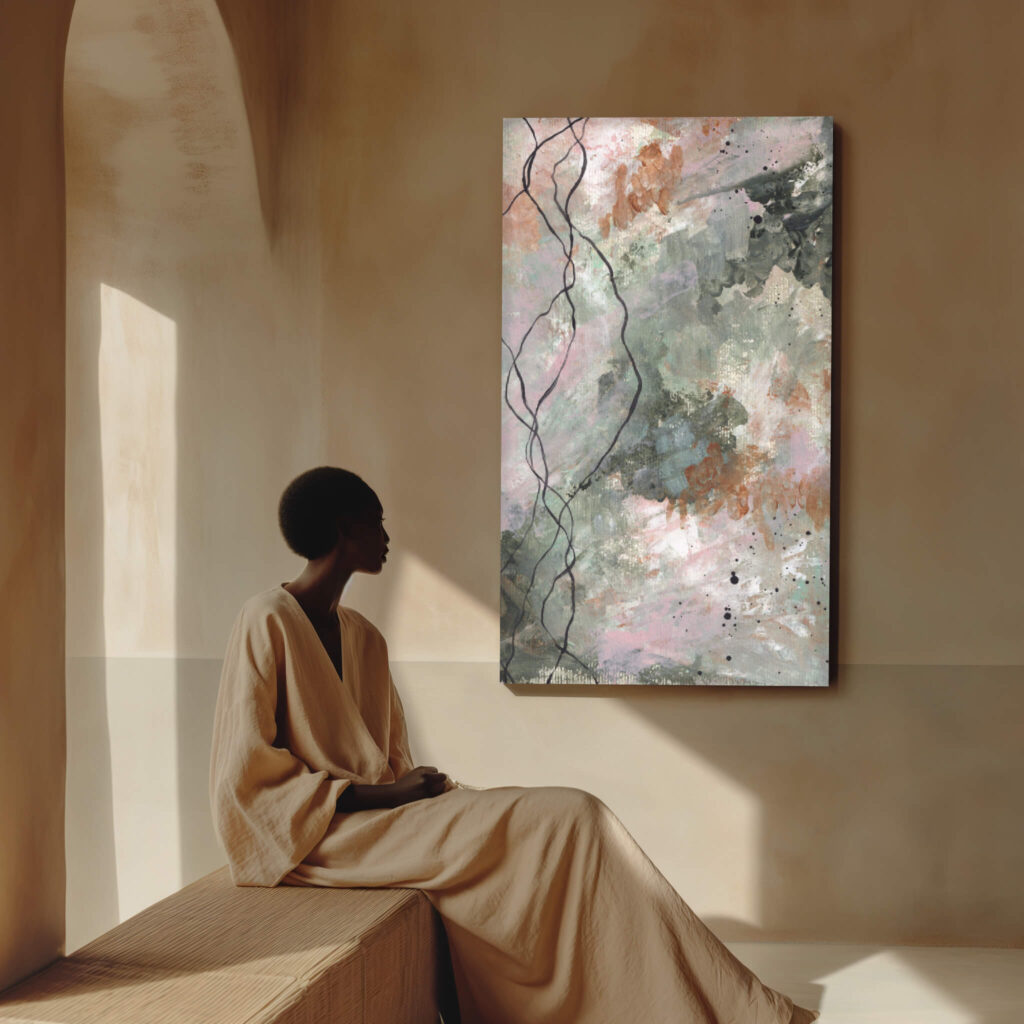
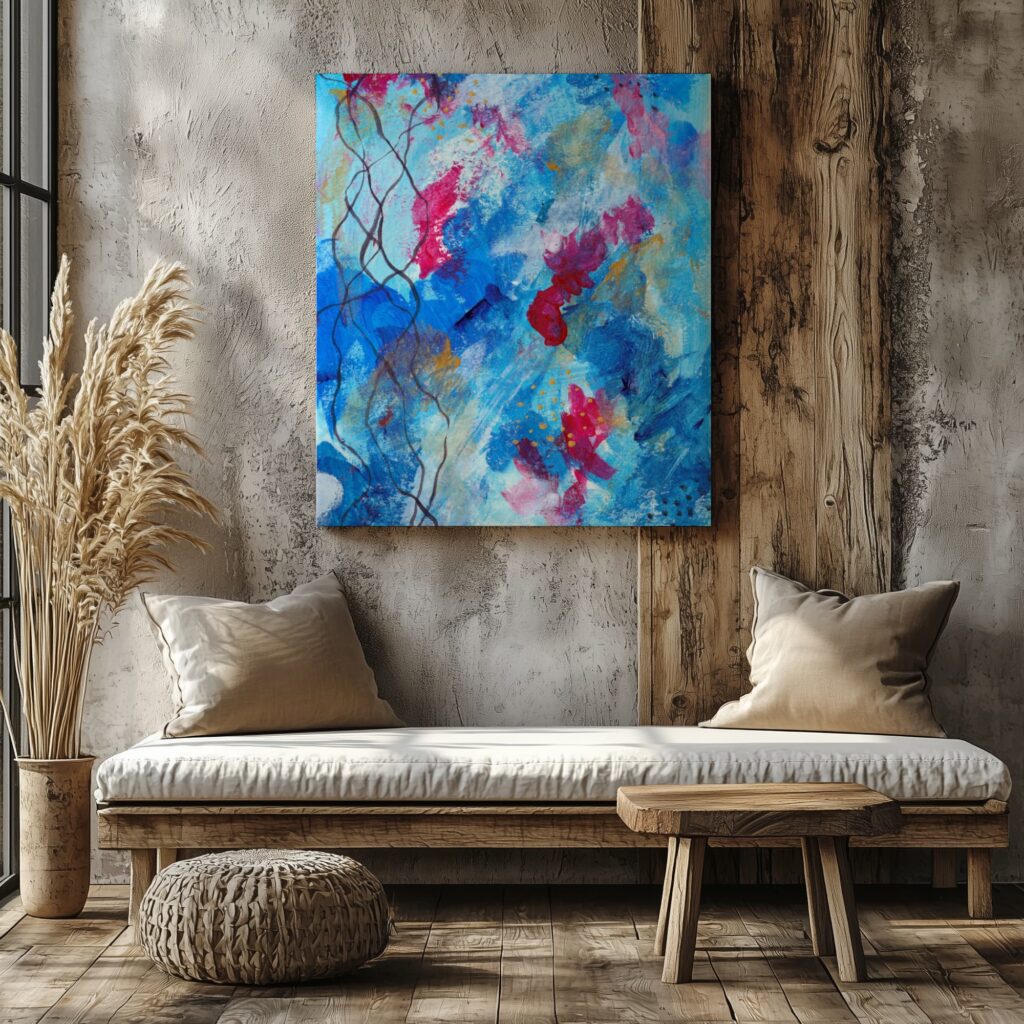
It Elevates Your Space From Functional To Sacred
Plenty of people have yoga mats. Or a meditation cushion. Or a quiet room.
But not everyone has a space that feels sacred — one that energetically signals to the body that this is a place of return.
Art does that. Not with rules or rituals, but with presence.
When you walk into a room that holds a large, emotionally attuned abstract work, you feel the difference. It marks the space. It holds it. It tells your nervous system, “This is where you let go.”
And once that association is built, it becomes easier to drop in. Faster. Deeper. More fully.
It Reconnects You With Your Aesthetic Intuition
You don’t need to be a designer to know what you’re drawn to. You don’t need to justify what speaks to you.
Your body already knows. Your nervous system already knows.
Bringing abstract art into your space lets you reclaim your aesthetic instincts, not for style, but for self-trust. For emotional honesty. For expression without needing to perform it.
That’s part of spiritual practice too. Letting yourself want what you want. Need what you need. Feel what you feel.
Sometimes, choosing a bold, emotive piece is the most healing act of self-permission you can offer yourself.
It Invites movement, Not Stagnation
Stillness doesn’t mean static. Your energy is always moving, even in rest. Especially in rest.
Abstract art reflects that motion. A piece with sweeping strokes or layered textures can subtly mirror your internal movement, even when your body is still.
This is particularly powerful during restorative poses, breath-led sequences, or post-practice integration. You’re not doing. But you’re moving. Softly. Invisibly.
Let the art support that. Let it remind you that rest is not absence, it is its own kind of motion. One that deserves just as much reverence.
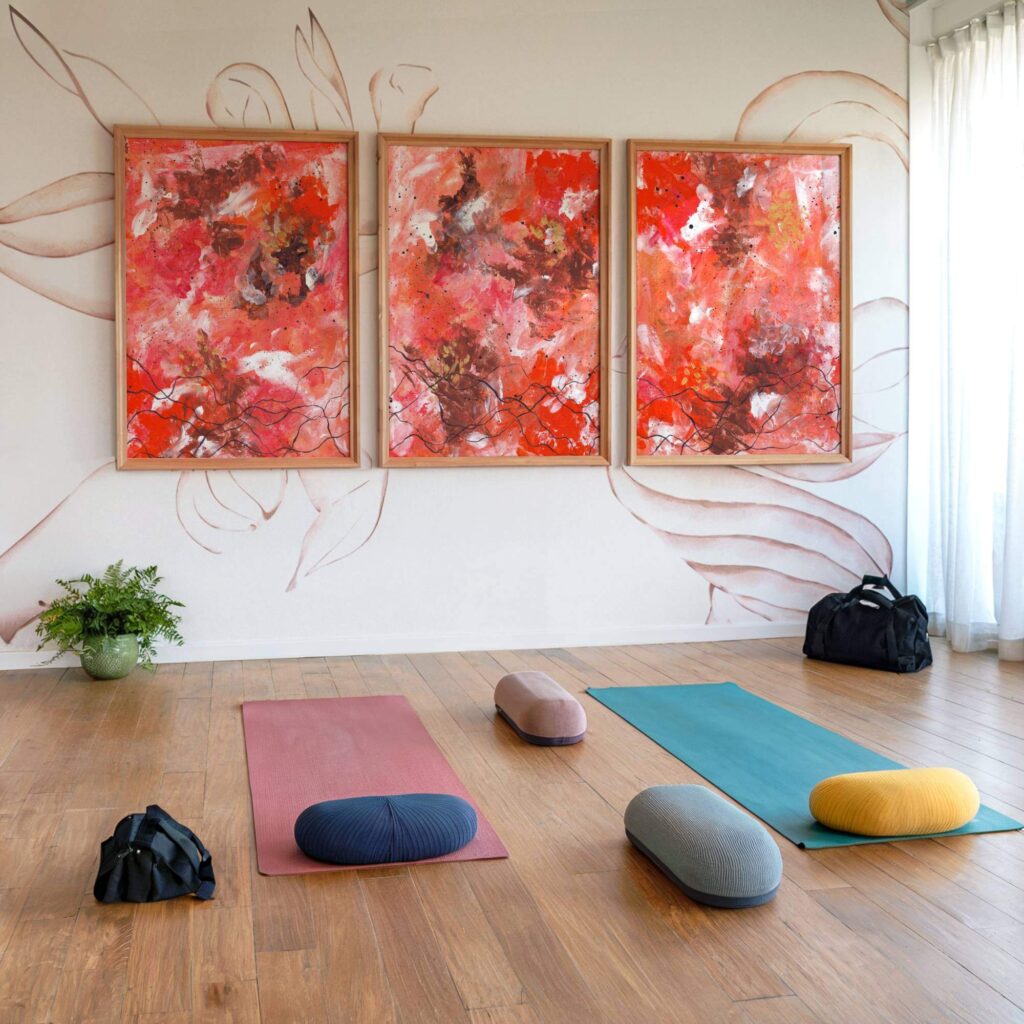
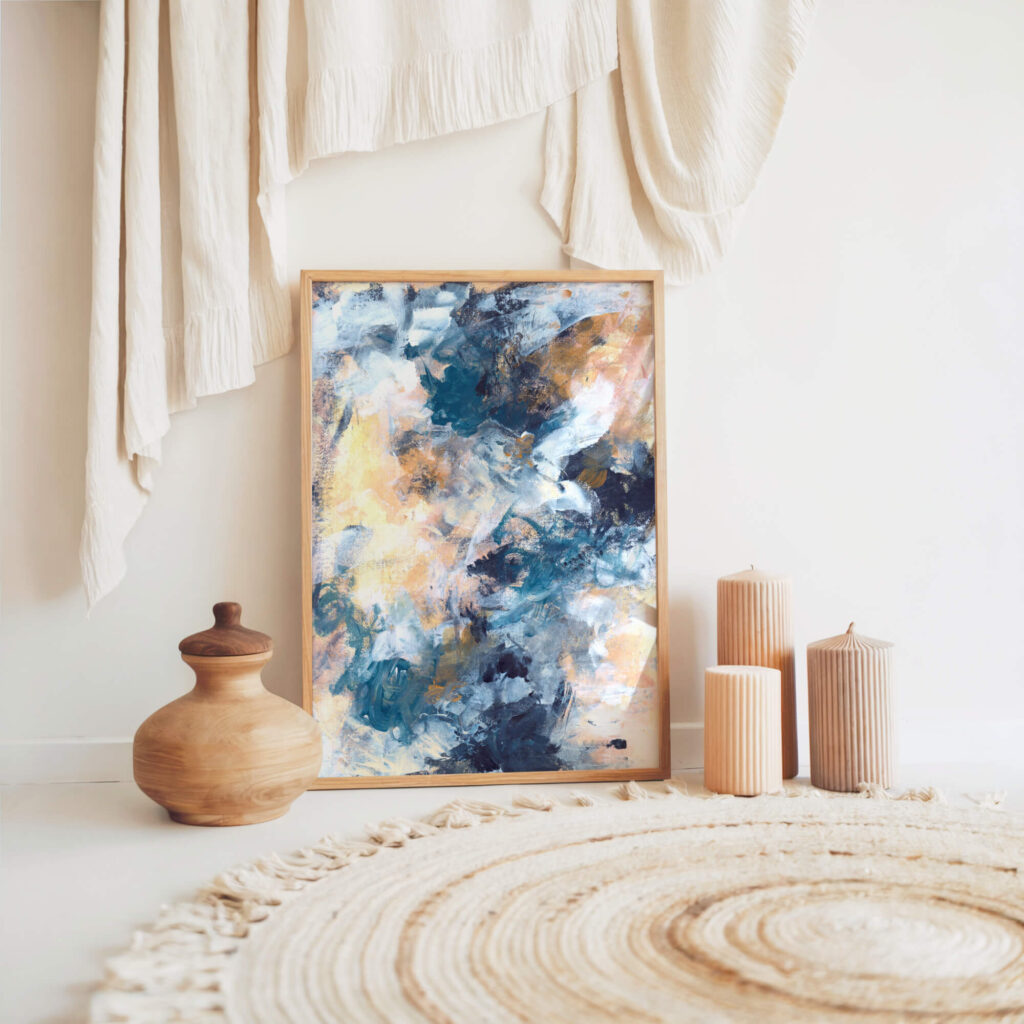
It Supports Both Solitude And Shared Energy
Whether you practise alone or hold space for others, your environment must support both inner depth and emotional containment.
Abstract art helps hold that dual purpose.
In a personal space, it meets you in your rawest state. In a group setting, it holds the emotional residue that builds up after multiple sessions, without absorbing it or pushing it away.
It becomes a kind of visual container. One that remains steady while everything else inside shifts and changes.
That kind of support is rare. And when you find a piece that does it, you’ll know.
It Helps Build A Daily Rhythm Of Return
Most people don’t struggle with starting a practice. They struggle with returning to it.
Discipline only gets you so far. What keeps you coming back is resonance, that sense that the space is calling you, not demanding you.
Abstract art can become part of that call. When you associate a certain piece with stillness, release, or grounding, it becomes a visual cue for your body to come home. You see it, and something softens.
Over time, this builds into rhythm. Not routine. Rhythm. That intuitive pull to return, again and again, to the space that knows you.
It’s less about productivity and more about relational depth. You’re not trying to do a practice. You’re returning to a relationship, with yourself, with your breath, with the visual frequency that reminds you who you are beneath all the noise.
It Creates Spaciousness For Your Clients, Students, Or Guests
If you run a yoga studio, hold meditation circles, or create any kind of healing container for others, your space carries more than your own energy.
Abstract art becomes a co-facilitator. One that doesn’t interfere, but holds space in the background. It gives your students something to connect with when they need grounding. It gives emotional weight to the silence between words.
Importantly, it also avoids projection. A painting of a serene face might suggest what healing is supposed to look like. Abstract art doesn’t do that. It offers permission instead of prescription. It tells your clients, “Whatever shows up for you today belongs.”
That level of spaciousness is rare in commercial wellness spaces. And it’s part of what creates real transformation.
My Offerings
Whether you’re a private collector, a wellness-focused brand, or a designer sourcing for a high-calibre project, I offer art that resonates deeply and subtly.
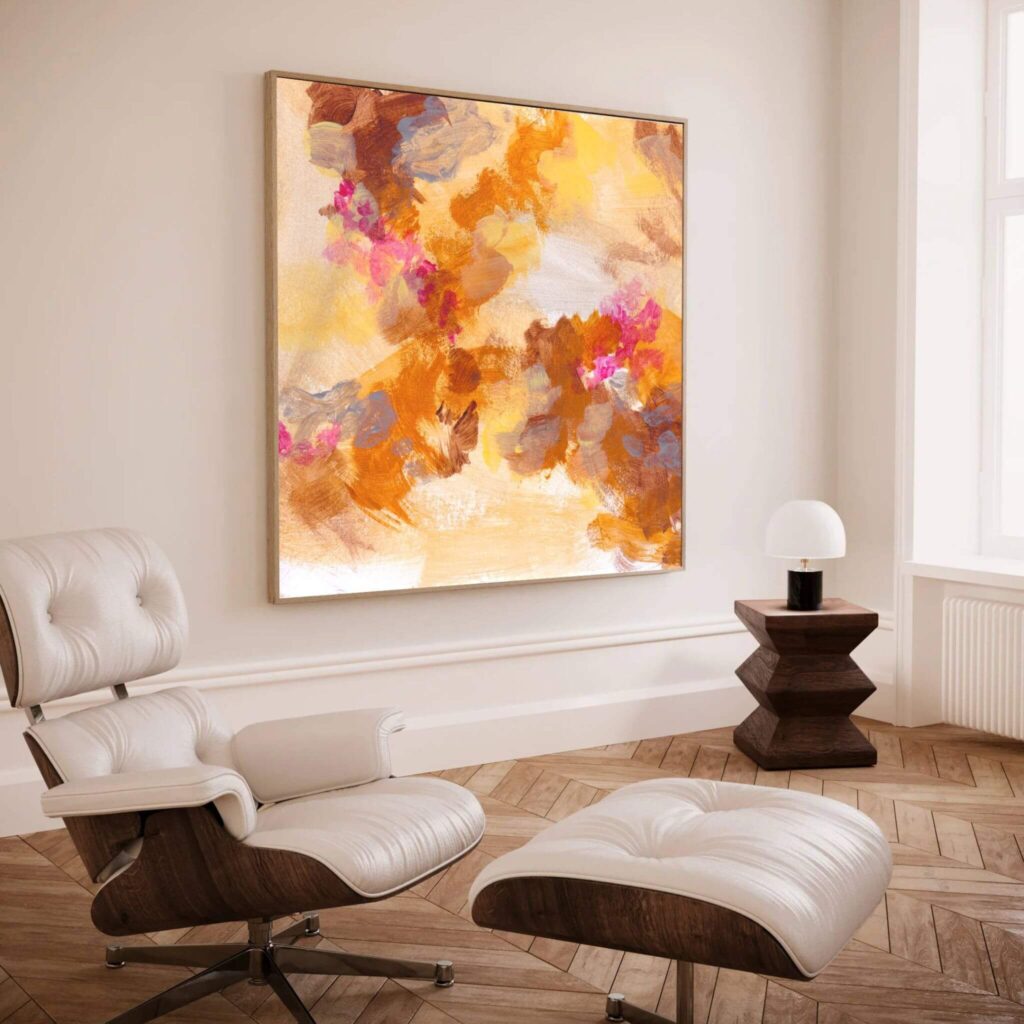
Collector's Vault
Curated canvas prints created from my original works—each one designed with emotional resonance and sustainable materials. Ideal for those creating meaningful spaces across the UK.
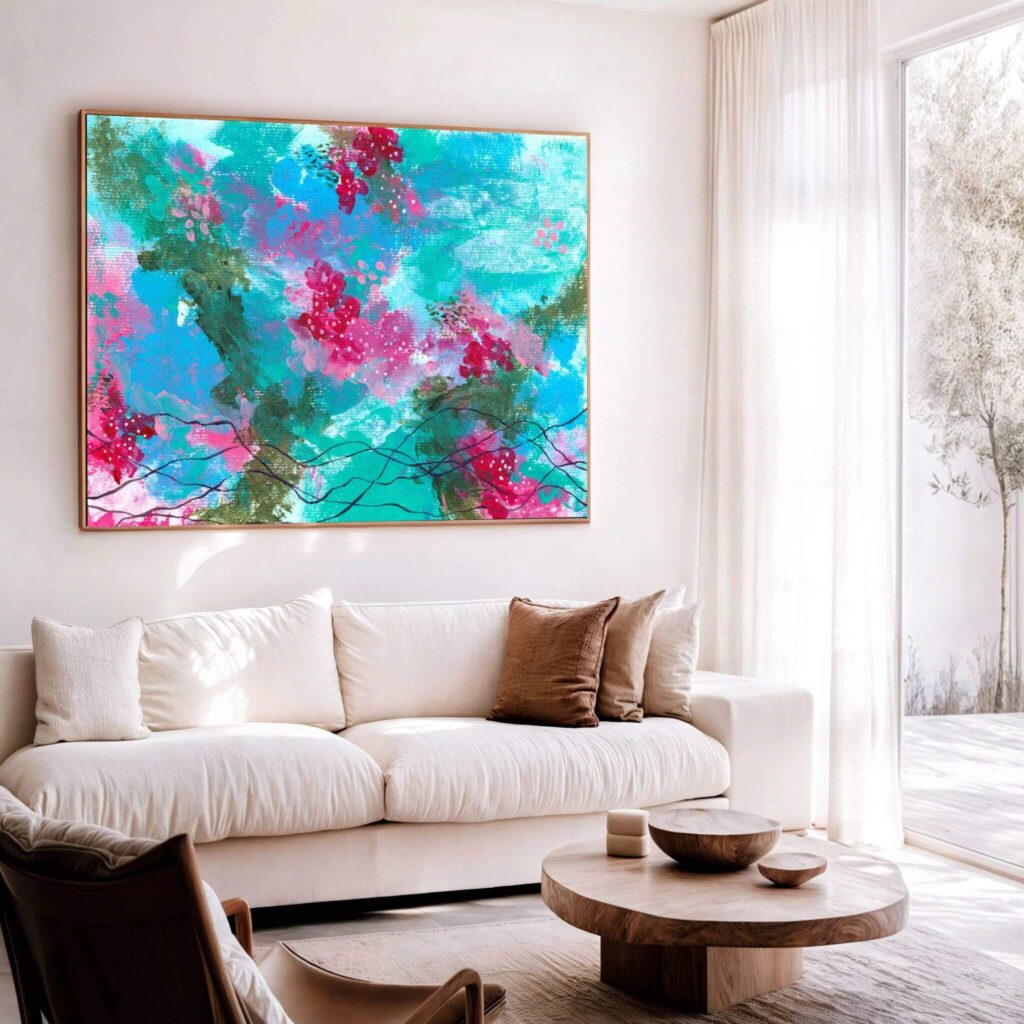
Soul on Canvas
Private commissions created from your story, your chapter, or your emotional intent. Made by hand. Printed once. Made to hold space for years to come.
The Last 10
Ultra-limited hand-embellished canvas works. Quietly released. Made to elevate, ground, or quietly command.
This Isn’t About Style. It’s About Stillness That Actually Works.
You don’t need another Pinterest board of yoga decor.
You don’t need another minimalist poster or lotus flower decal.
What you need is art that holds your emotional truth. That meets you in both tension and release. That doesn’t need to be understood, but still feels like home.
Abstract art does that.
It doesn’t interrupt. It integrates. It makes the room feel like it belongs to you, not just practically, but spiritually. And when your environment reflects your inner life, healing becomes easier. Deeper. Quicker. Gentler.
So if your practice matters, make your space matter too.
If you’re ready to explore abstract works that were created from stillness, for stillness, you’re welcome to begin here:
Explore Legacy Thread →
